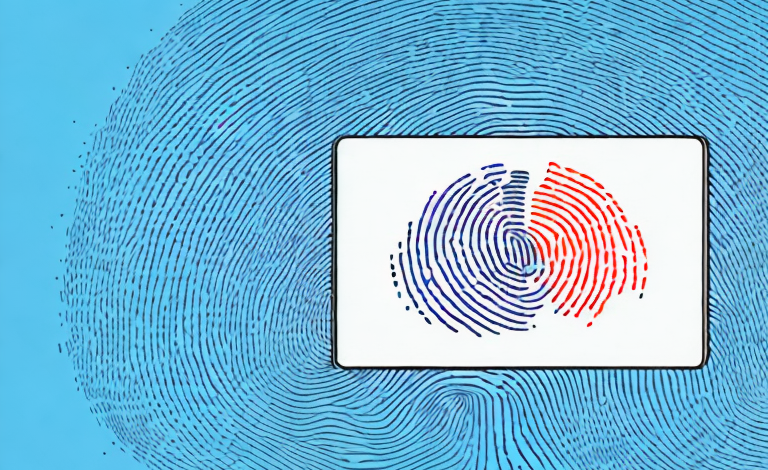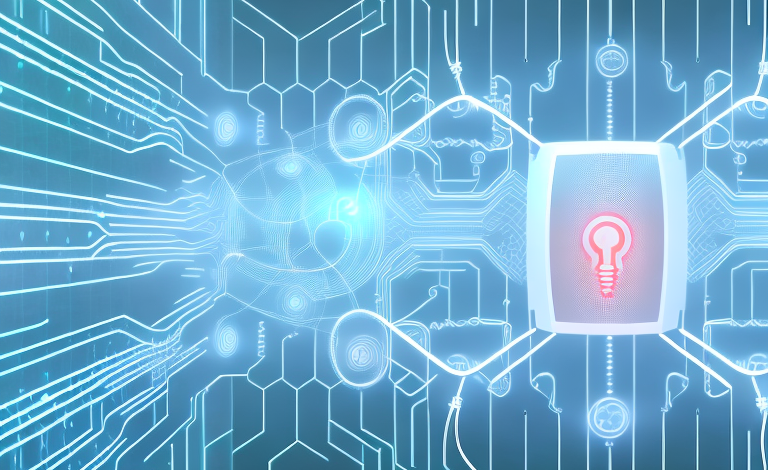For a long time, fingerprints have been considered to be the gold standard for personal identification. In modern times, fingerprint recognition technology has become increasingly popular as a fast and reliable security measure. However, what happens when your fingerprints cannot be read? This situation can be frustrating, especially when fingerprint recognition is the only method of identification. In this article, we will explore the reasons why fingerprints may not be readable, alternative methods of personal identification, and emerging technologies that can offer a solution.
Reasons why fingerprints may not be readable
There are several reasons why fingerprints may not be readable. One of the most common reasons is improperly taken fingerprint impressions. When fingerprints are not taken with care, the resulting image may be insufficient for identification purposes. Other reasons may include dry or oily skin, cuts or scars, and the use of lotions or creams that can interfere with the fingerprint recognition process. In some cases, the age of the individual and the quality of their fingerprints can also impact the readability.
Another reason why fingerprints may not be readable is due to the presence of foreign substances on the fingers. This can include dirt, dust, or other materials that can obscure the ridges and valleys of the fingerprint. Additionally, certain medical conditions such as eczema or psoriasis can affect the quality of the fingerprint and make it difficult to read.
It is important to note that while fingerprints are a valuable tool for identification purposes, they are not foolproof. In some cases, fingerprints may be too degraded or distorted to be useful in identifying an individual. In these situations, other forms of identification, such as DNA analysis or facial recognition technology, may be necessary.
Common situations where unreadable fingerprints can pose a problem
The inability to read fingerprints can be a significant issue in many different situations. In airports, for example, passengers may use their fingerprints to access secure areas. When fingerprints cannot be read, this can cause delays and security concerns. In the healthcare industry, fingerprint recognition may be used to access medical records, and when fingerprints are unreadable, it can impede patient care. Additionally, in criminal cases, unreadable fingerprints can make it difficult to identify suspects or prove someone’s guilt.
Another situation where unreadable fingerprints can pose a problem is in the banking industry. Many banks use fingerprint recognition as a security measure for accessing accounts or making transactions. If a customer’s fingerprints cannot be read, it can cause frustration and inconvenience, and may even lead to financial losses if unauthorized access occurs.
Unreadable fingerprints can also be a challenge in the field of forensics. Fingerprints are often used as evidence in criminal investigations, and if they cannot be read, it can hinder the investigation and potentially lead to a wrongful conviction or acquittal. In some cases, forensic experts may need to use alternative methods, such as DNA analysis, to identify suspects or victims.
The science behind fingerprint recognition technology
Fingerprint recognition technology works by analyzing the unique, individual characteristics present in a person’s fingerprints. The analysis can include ridge endings, bifurcations, and other minutiae that distinguish one fingerprint from another. Once these characteristics are extracted, they are compared to a database of known fingerprints to provide identification. However, if the quality of the fingerprint is insufficient or if the fingerprint has no unique characteristics, identification becomes a significant challenge.
Advancements in fingerprint recognition technology have led to the development of more sophisticated algorithms that can analyze even the most complex fingerprint patterns. These algorithms can also detect and correct errors caused by smudging or partial prints, making it easier to identify individuals accurately. Additionally, fingerprint recognition technology is now being used in a variety of applications beyond law enforcement, such as unlocking smartphones and accessing secure facilities. As technology continues to evolve, it is likely that fingerprint recognition will become even more accurate and widely used in the future.
Alternative identification methods when fingerprints cannot be read
If fingerprints cannot be read, there are alternative identification methods available. DNA testing, facial recognition technology, and iris scanning are just a few examples of alternative biometric identification methods that are used today. Additionally, traditional methods of identification, such as ID cards and passwords, remain a reliable option.
It is important to note that while these alternative methods can be effective, they may not always be foolproof. For example, DNA testing can be time-consuming and expensive, and facial recognition technology may not work as well for individuals with certain facial features or in low-light conditions. It is also important to consider privacy concerns and potential biases in the use of these technologies. Therefore, it is crucial to have a multi-faceted approach to identification, incorporating a variety of methods to ensure accuracy and fairness.
How to improve the quality of your fingerprints for better recognition
To improve the quality of your fingerprints for better recognition, it is essential to take proper care of your skin. This includes keeping the skin moist, avoiding using lotions or oils immediately before fingerprinting, and avoiding cuts or abrasions that can damage the fingertips. Additionally, regular hygiene practices such as handwashing can help to maintain the health of your skin and improve fingerprint quality.
Another way to improve the quality of your fingerprints is to avoid exposing your fingertips to extreme temperatures. Exposure to extreme heat or cold can cause the skin to dry out and crack, which can affect the quality of your fingerprints. It is also important to avoid using harsh chemicals or abrasive materials on your fingertips, as these can cause damage to the skin and affect the quality of your fingerprints.
Tips for maintaining good fingerprint hygiene
To maintain good fingerprint hygiene, it is important to practice good skin care habits. This includes avoiding harsh soaps or chemicals that can dry out the skin and cause cracks. Additionally, it is essential to keep the fingertips free of dirt and grime, as this can impact the quality of the fingerprint image. It is also important to take care when handling chemicals and cleaning agents that can damage the fingertips.
Another important aspect of maintaining good fingerprint hygiene is to avoid excessive sweating on the fingertips. Sweating can cause the ridges on the fingertips to become less defined, making it more difficult to obtain a clear fingerprint image. To prevent excessive sweating, it is recommended to keep the hands and fingertips dry, especially during hot and humid weather. Using antiperspirant products on the fingertips can also help to reduce sweating.
Legal implications of unreadable fingerprints in criminal cases
The inability to read fingerprints can have significant legal implications in criminal cases. When fingerprint evidence is not available, prosecutors may have a more challenging time proving guilt, and defense attorneys may have an easier time arguing for acquittal. Additionally, when errors occur in the fingerprint database, it can lead to wrongful arrests and conviction.
Furthermore, the use of technology to enhance or analyze fingerprints can also be called into question in court. The reliability and accuracy of such technology may be challenged by defense attorneys, and the admissibility of the evidence may be disputed. This can lead to delays in the legal process and potentially impact the outcome of the case.
Solutions for correcting errors in fingerprint databases
When errors occur in fingerprint databases, it can have significant consequences. One solution is to implement regular audits of those databases and to have proper protocols in place to correct any inaccuracies. Additionally, biometric technology is becoming increasingly accurate, with facial recognition and iris scanning technologies helping to improve the identification process.
Another solution is to use machine learning algorithms to detect and correct errors in fingerprint databases. These algorithms can analyze large amounts of data and identify patterns that may indicate errors or inconsistencies. This can help to improve the accuracy of the database and reduce the risk of false identifications.
It is also important to ensure that the individuals responsible for managing and maintaining the fingerprint databases are properly trained and have the necessary expertise to identify and correct errors. Regular training and education programs can help to ensure that staff members are up-to-date with the latest technologies and best practices for managing biometric data.
Emerging technologies for more accurate fingerprint recognition
New technologies are being developed all the time to improve fingerprint recognition accuracy. One such technology is multi-factor authentication, which combines different biometric identification methods to provide a more accurate identification. Additionally, facial recognition technology is becoming more advanced, enabling more accurate person identification. Other emerging technologies include vein-matching, voice recognition, and DNA analysis.
Another emerging technology for fingerprint recognition is the use of artificial intelligence (AI). AI algorithms can analyze and compare fingerprints more accurately and quickly than humans, leading to more reliable identification. This technology is already being used in some law enforcement agencies and is expected to become more widespread in the future.
Another area of development is the use of 3D printing to create more accurate fingerprint replicas for testing and training purposes. This technology allows for the creation of highly detailed and realistic fingerprints, which can be used to improve the accuracy of fingerprint recognition systems.
Best practices for protecting sensitive information when fingerprints cannot be read
To protect sensitive information when fingerprints cannot be read, it is essential to have proper security protocols in place. This includes strong password policies, two-factor authentication, and limiting access to sensitive data to only authorized personnel. It is also important to have regular employee training to reinforce these policies and to ensure that all staff members are aware of the protocols in place.
In addition to these measures, it is recommended to regularly update and patch all software and systems used to store and access sensitive information. This helps to prevent vulnerabilities that could be exploited by hackers or other malicious actors. It is also important to have a system in place for monitoring and detecting any unauthorized access attempts or suspicious activity.
Another best practice is to have a clear and comprehensive incident response plan in place. This plan should outline the steps to be taken in the event of a security breach or other incident involving sensitive information. It should also include procedures for notifying affected parties and for mitigating any damage caused by the incident.
Future trends and advancements in biometric identification technology
As technology continues to evolve, the field of biometric identification is expected to grow and change. One upcoming trend is improved interoperability, allowing different identification systems to work together more easily. Additionally, there is growing interest in using machine learning and artificial intelligence to improve the accuracy of biometric identification methods. The future of biometric identification is exciting, and we can expect to see more advancements and breakthroughs in the coming years.
Conclusion
While the inability to read fingerprints can be a significant problem, there are alternative identification methods available. Proper skin care and hygiene can also improve the quality of fingerprints for better recognition. Additionally, emerging technologies are providing new solutions, and there is hope that biometric identification accuracy will continue to improve in the future.



